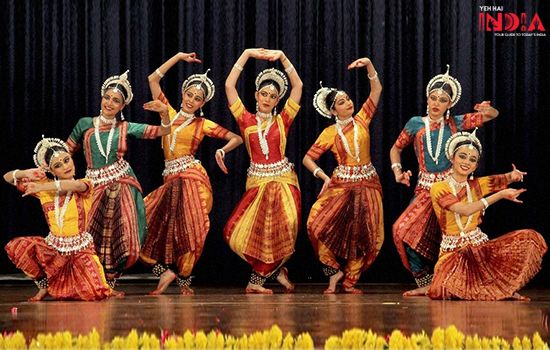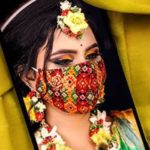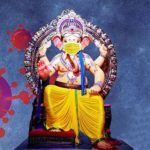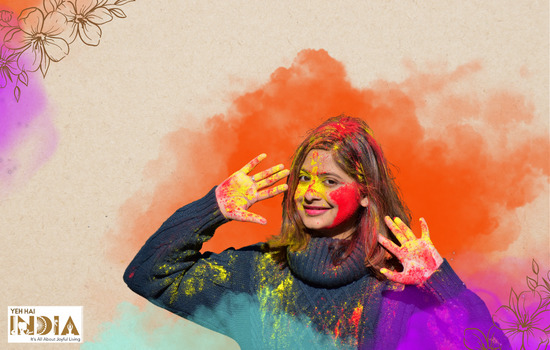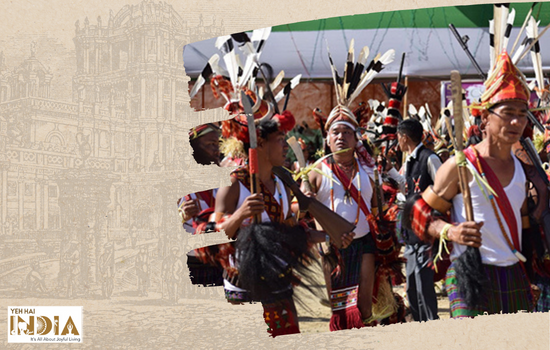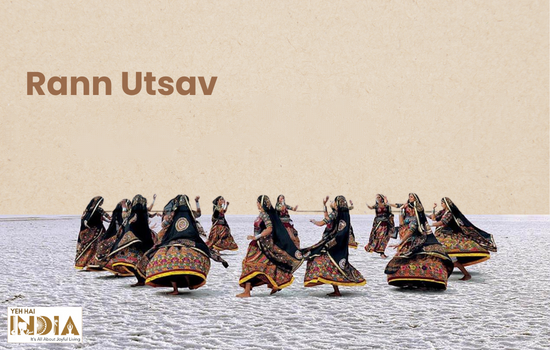With the classical instruments playing in the background along with the ragas, impeccable match of the hand gestures and exacting footwork, postures which reflect grace and poise, and the facial expressions which speak in silence, this is the scene which comes to mind every time one thinks of an Indian Classical Dance performance.
India is a treasure of classical dance forms having its roots in ancient India and ever since that time it is being carried out by some exceptional talents of our country.
Kuchipudi is one such dance form and is one of the 11 Classical Dance Forms. It originated in the village named ‘Kuchipudi’ of the Krishna District in Andhra Pradesh.
Kuchipudi is a dance-drama performance with its roots based in the ancient Hindu Sanskrit text ‘Natya Shastra’. Just like other classical dance forms, it is linked to temples and spiritual beliefs and is recognized as a ‘religious art’.
The name ‘Kuchipudi’ is a short form of ‘Kuchelapuram’ or ‘Kuchilapuri’ where it was developed and it is derived from the Sanskrit words ‘Kusilava Puram’ where Kusilava is a term found in ancient Sanskrit text referring to a traveling bard, dancer, etc. which means ‘the village of actors’.
History of Kuchipudi
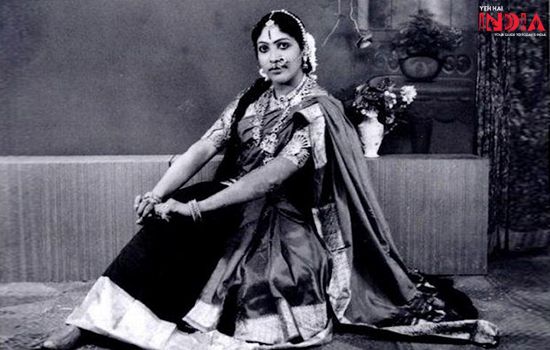
Tracing its roots to the ‘Natya Shastra’, Kuchipudi’s first complete compilation is dated between 200 BCE and 200 CE. The dance-drama tradition has been associated with the ancient origins in Andhra Pradesh mentioned in Natya Shastra.
10th-century copper inscriptions called ‘Brahma Melas’ are evidences of dance-drama performances related to Shaivism and were present in the Telegu-speaking parts of South India. The artists who performed these dance-dramas in the medieval period were the ‘Brahmins’.
In the second millennium, the art was adopted by the singing and dancing Bhakti traditions of Vaishnavism, and this art evolved as Kuchipudi in Andhra Pradesh and ‘Bhagvata Mela Nataka’ in Tamil Nadu.
The modern version of Kuchipudi is attributed to the 17th century Telegu Sanyasin – ‘Tirtha Narayanayati’ and particularly his disciple – an orphan named ‘Sidhyendara Yogi’, a Telegu Brahmin who was later followed by a man called ‘Bhama Kalapam’.
Sidhyendara Yogi faced many obstacles in spreading this dance form as he was not able to find suitable performers. To overcome this, he went to Kuchelapuram where he prepared a team of young Brahmin boys to perform the play once a year which came to be known as ‘Kuchipudi’.
Traditionally it was only the men who would perform Kuchipudi, moving from village to village and performing on the stage set next to a Hindu temples. They would even enact as a female character by dressing up like one.
Late Medieval Period
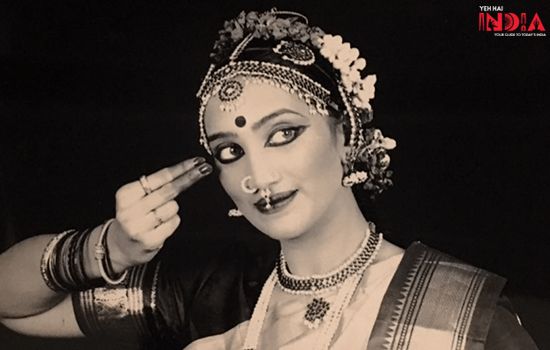
Kuchipudi beacame quite popular in the 15th and the 16th century. The Vijayanagara Empire had the dance-drama troupes of ‘Bhagvatas’ from Kuchipudi village perform in their royal court as mentioned in the court records.
With the Islamic invasions and forming of Deccan Sultanates in the 16th century, the region saw many wars and political turmoil. The fall of Vijayanagara and the destruction of temples made musicians and dance-drama performers migrate to the south where they were welcomed and even granted land by the Hindu ruler ‘Achyutappa Nayak’.
Whoever was left in the village were the sole custodians of the dance form tradition in Andhra.
With Kuchipudi dying and at the last stages of its existence in the 17th century, it was the last ruler of Shia ‘Abul Hasan Qutb Shah’ of Golconda who was so pleased with the Kuchipudi dance form that he granted the land around the Kuchipudi village and gave them the freedom to continue this dance-drama.
After overthrowing the Shia Sultanate in 1687 by the Mughal Emperor Aurangzeb, he banned all public music and dance performances along with the destruction of musical instruments in the Indian subcontinent under the Mughal Empire.
Colonial Rule Period
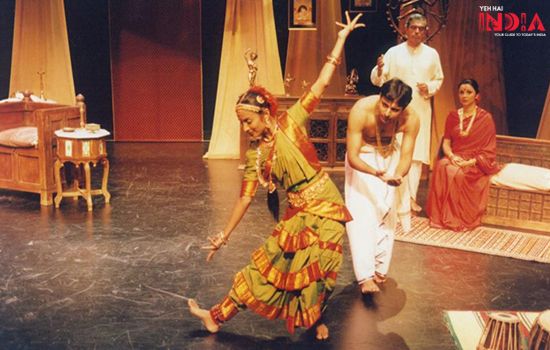
After the Mughal Empire collapsed in 1707, Hindu rebellions came forward in many parts of the country including the Deccan region.
With this continuing for long, the time came when the colonial Europeans arrived and the country witnessed heavy political turmoil in the later half of the 18th century.
During this time, Hindu arts and dance-drama were ridiculed with Christian missionaries and British officials stereotyping and de-humanizing artists. Christian missionaries even launched the ‘anti-dance’ movement in 1892 for banning all such dance forms.
The Madras Presidency of the British Empire which included the Andhra region banned temple dancing because of which Kuchipudi dance form started declining like other classical dance forms.
After this ban, many Indians protested to protect and preserve their culture and fought against this discrimination. And finally, these efforts saw Kuchipudi along with other classical dance forms witnessed the period of renaissance.
Modern Period of Kuchipudi

The first half of the 20th century witnessed three influential figures – Vedantam Lakshminarayana Sastri, Vempati Venkatanarayana Sastri, and Chinta Venkataramayya.
Sastri completely focussed on reviving and re-launching Kuchipudi after it was ridiculed and politically degraded. He was the one who encouraged and taught Indian women to dance Kuchipudi as solo performers and teams.
Venkataramayya focussed on productions for public performances. He even developed specialized forms of ‘Yakshagana’ – another Classical Dance Form and Kuchipudi. Even western dancers joined in an attempt to preserve the dance form. The biggest move was made by American dancer Esther Sherman who moved to India in 1930, learned classical dance forms, and changed her name to ‘Ragini Devi’.
Her daughter Indrani Rahman and Yamini Krishnamurthy created a wider recognition for Kuchipudi and enthusiasm through their students which gave this dance form a name as a creative performance both nationally and internationally.
Organized by the national arts organization Sangeet Natak Akademi, the historic ‘All India Dance Seminar’ in 1958, took Kuchipudi to the national stage.
In modern times, women have been increasing in numbers and are among the most celebrated artists. In some cases, a female dancer enacts the male characters by dressing up like them.
Sequence
Kuchipudi is a team performance that requires extensive stage movements and matching footwork. This dance-drama requires hand gestures, eyes, and facial expressions to emote the underlying drama.
Kuchipudi is typically performed at night in a temple or next to it with the stage being lit with yellow lights.
Kuchipudi show sequence consists of ‘Nritta’ and ‘Nritya’ in solo and group performances and if it has an underlying text as a play then it may include a ‘Natya’.
Pure abstract parts of Kuchipudi may include parts of darus, jatis, jatiswarams, tirmanas and tillana whereas the expressive performance or Nritya includes padams, varnams, shabdams, and shlokas.
The dance-drama begins with an invocation which is an on-stage prayer to Ganesha or can be expressing reverences to various Hindu gods and goddesses or even their gurus.
The one who conducts the entire performance enters and plants an Indra’s banner and each actor is introduced along with the characters they are playing in the performance.
Each actor then performs a short dance called a ‘Pravesa Daru’ accompanied by a small musical piece where the vocalists describe his/her role. The conductor can be considered as the main person who is present on the stage for the entire performance where he explains the play and talks with the audience.
Nritta
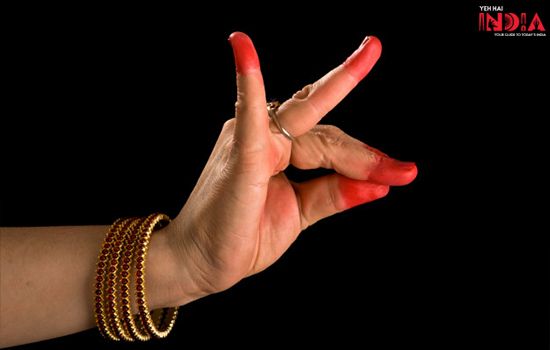
After the introduction part, the Kuchipudi performance starts with the ‘Nritta’ part. This is purely a dance performance which goes rhythmically with the musical ragas called as ‘Sollakath’ or ‘Patakshara’.
There are basic units in the Kuchipudi dance and is known as ‘Adugu’ corresponding to the ‘Karana’ in the Natya Shastra. Each of these units is performed, according to the ancient texts to a certain recital of mnemonic syllables and musical beats to it.
And each of these units goes as a set of hand and foot movements into a Sthana (posture) and Chari (gait) which captivates the audience and visually engulfs their imagination.
Nritya
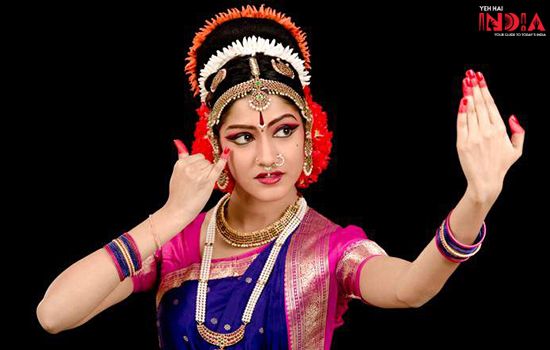
Nritya is the next part which an expressive part called ‘Abhinaya’ which means to enact and is the center and heart of the play. There is extensive use of hand mudras and facial expressions which have been inspired by the ‘Sign Language’ mentioned in the ancient Sanskrit texts and footwork matching with the rhythm of the music through which the story is communicated to the audience.
The sign language in here follows the classical Sanskrit Texts such as Natya Shastra, Abhinaya Darpana, and Nrityararnavali accompanied by Carnatic Music in the background and recitals in Telegu language.
The solo performance or a solo part in the performance is called ‘Shabdam’ which consists of a verse, prose, or a poem. On the other hand, ‘Varnam’ combines dance with mime which expresses ‘Rasa’ (emotional taste) which can be performed either in a solo or a group performance.
Kavutvams
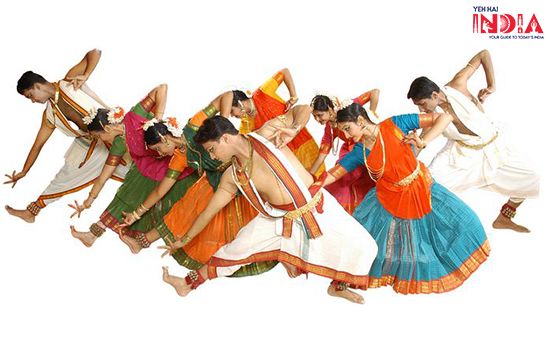
Performed as either Nritta or Nritya is ‘Kavutvams’ which are performed on different ‘talas’ where the actor performs acrobatics increasing the complexity of the presentation.
In this type of performance, an actor faces a challenge, e.g., performing the footwork along with the music with a series of pots on his head where his hands are performing the mudras and the facial expressions emoting the text. This needs a lot of practice as acrobatics makes the performance more challenging where the balancing of every element is important.
Some artists dip their foot on to a wet ink pad, dancing rhythmically on a blank white piece of paper, thus painting it whereas a troupe places colored rice powder on the floor and top the white piece of paper, dancing on the musical composition where their weight and steps make the pigments to stick.
The painting is then shown to the audience which can be a scene from the natural scenery, a bird, flower, or even Ganesha, something that is an important part or the central aspect of the performance.
Costumes

In traditional Kuchipudi performances, a male dancer would wear an ‘Angivastra’ also known as ‘Bagalbandhi’, a ‘dhoti’ (a single pleated piece of cloth tied from the waist hanging down). A dancer in the female role would wear a ‘Sari’ with no heavy makeup.
In the modern scenario, the male dancers retain the same costume whereas there is an elaboration when it comes to the dancers in female roles.
The women now wear colorful Saris with a pleated fan stitched in the front of the costume for highlighting the footwork. A light metallic belt is worn at the waist which holds the costume at the right place.
Hair is braided the same way as in Bharatnatyam, but with flowers in it. The jewelry for both hair and face has symbolic elements which are the Vedic symbols of the sun, the moon, nature, and so on. Jewelery is placed on hair, ear, nose, armlets, and neck with necklaces.
The ‘Ghungroos’ are thick leather belts with small bells which is also an important accessory. A big red ‘Bindi’ or a ‘Tilak’ is placed on the forehead and the eyes are designed with black collyrium for enhancing eye movements and expressions more clearly for the audience.
For Kuchipudi performances which have acrobatics or special plays may include different props, such as the pots, wing props, transparent head sheet, feathered crown, etc.
Musical Instruments of Kuchipudi
The main musical instruments used in a Kuchipudi performance are – Mridangam, Violin, Cymbals, Thamburi, and Flute.
The conductor of the performance keeps the beats using cymbals and reciting musical syllables. He may also sing out the spiritual story or the song which needs to be enacted or this may be performed by separate vocalists.
The orchestra ensemble includes a drummer (Mridangam), a clarinetist, and a violinist. Flutists maybe present only depending on the requirement in the performance.
Major Kuchipudi Dramas
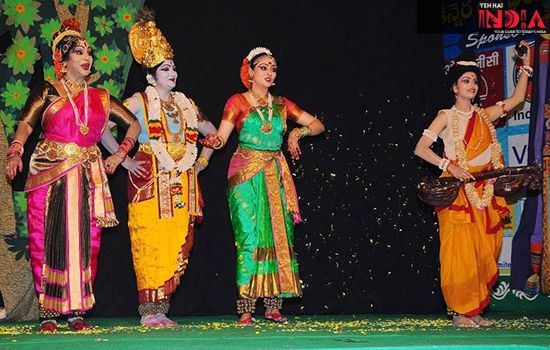
Bhama Kalapam of Sidhyendara Yogi is the most popular dance-drama of all.
The story of Krishna’s life right from his birth till his marriage to Rukmini has been curated and performed in ‘Krishna Leela Tarangini’ composed by Narayana Teertha who was a great Saint and a devotee of Lord Krishna.
Inspired by the Bhama Kalapam came ‘Golla Kalapam’ which portrays an ethical satirical conversation between a Gopi and a Brahmin wrote by Ramiah Sastri.
Commonly performed plays are the ‘Kritis’ of Thyagaraja and out of 4500 composed by Kshetrayya of Muvvu are the 700 surviving padams.
There are traditional compositions that have been performed by Kuchipudi artists internationally, include –
- Srinivasa Kalyanam
- Rukmini Kalyanam (marriage of Krishna and Rukmini)
- Sakuntalam Bhamakalpam
- Hara Vilasam
- Prahlad Charitram (Holi related story)
- Usha Parinayam
- Sashirekha Parinayam
- Rama Natakam (probably the oldest play)
- Mohini Rukmangada
- Chamundeshwari Sabda
- Ardhanareeswaram Sabda and
- Perini Thandavam
Training of Kuchipudi

Just like any other classical dance forms, Kuchipudi training should be started at a young age. This includes years and years of determination and practice which helps in perfecting the craft.
The training includes physical exercises, theory, and demo lessons along with classes on teaching the minor details.
The physical exercises range from Yoga to specific body part exercises for developing strength and flexibility of leg muscles, lower body, core, arms, shoulders, and neck.
Some special exercises –Dandemu, Chakradandemu, Gunjeelu, Kailsamu, Kappilu, Moggalu, and Ekapada stated by Kothari and Pasricha.
Interesting Facts of Kuchipudi
- It is the fastest classical dance form in terms of speed as compared to the other dance forms.
- Kuchipudi is performed on both Carnatic and Hindustani Classical Music.
- It uses four Abhinayas – Angika, Vachika, Aharya, and Satvica making it a unique dance form.
- Over 2,800 dancers on 26th December 2010 including 200 teachers created a Guinness World Record by performing in over 15 countries and for 11 minutes.
- Rumya Sree Putcha in her doctoral dissertation ‘Revisiting the classical: A critical history of Kuchipudi dance’ provides an analysis of this traditional dance in Indian cinema.
Read Also – Top Indian Classical Dancers of all times


